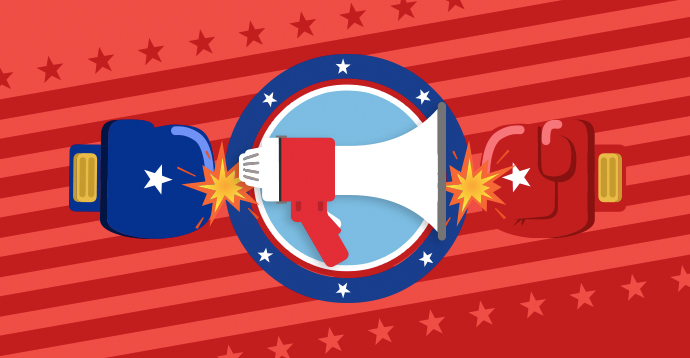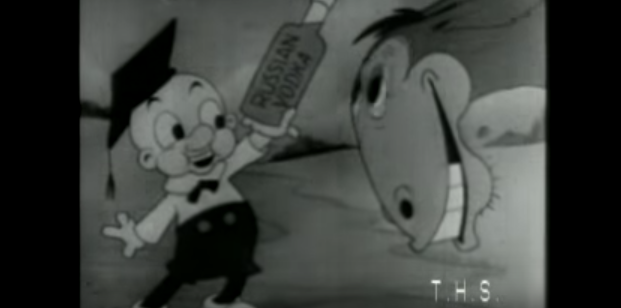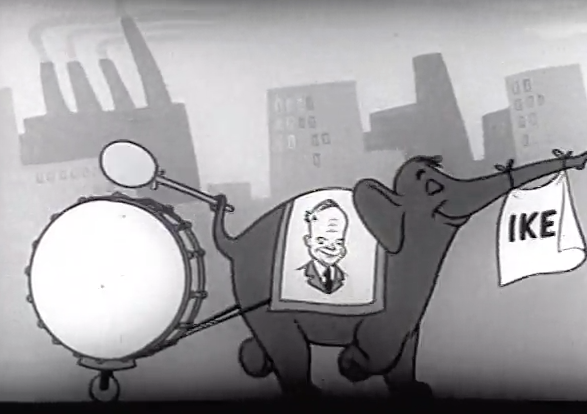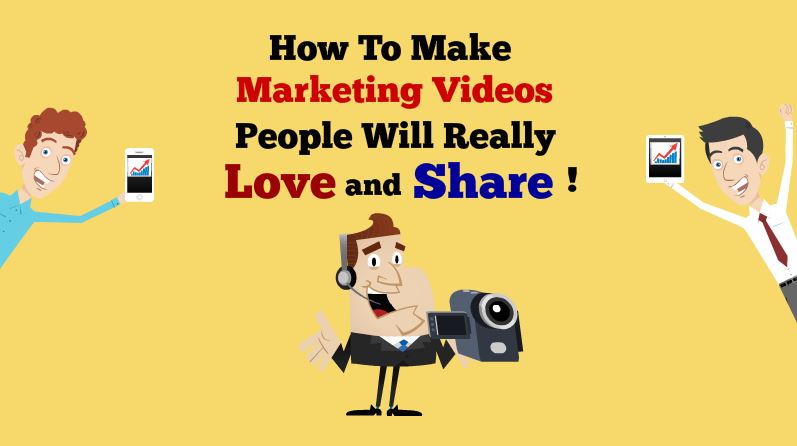
Demolish Your Competition and Be a Household Name With the Eisenhower Method
https://powtoon.wistia.com/medias/3bkk9z9w6h?embedType=iframe&videoFoam=true&videoWidth=640
What gives? Your competition is taking leads away from you, left and right. Their name always seem to be on the tip of your customers’ tongues. It’s a nightmare!
How do you rise above the noise? How can inspire your tribe to turn out when it really counts? Well, for a bit of animated inspiration, we’re reaching back into the archives to uncover the secret of some of the most motivated marketers in history: Presidential candidates.
Here’s the amazing thing: The person who used animation to demolish his competition made it look so easy, his ad is still legendary. And we call it the Eisenhower Method. But I’m getting ahead of myself…
In the Beginning
The first animated political cartoons emerged in the 1930s and 40s. This was before television, and the cartoons were overwhelmingly long, complicated and negative.
Like the 1936 campaign of Alf Landen. They made a 7-minute screed against the Democrat, Franklin Delano Roosevelt. In it, they accuse F.D.R. of turning the sensible ideas of the “Democratic Donkey” into the ruinous policies of the New Deal Jackass, whom they accuse of trading prosperity for pork, and common sense for Russian vodka.

The 1944 Roosevelt campaign doubles down on Landen’s approach, making a 14-minute piece that personified F.D.R. as a modern, high-speed locomotive called the “Win-The-War Express.” This train-F.D.R. must make it to Washington before the dilapidated Republican train, the Defeatist Limited. The cartoon leaves no doubt that a vote against Roosevelt is a vote for the Axis powers. A vote for his opponent is a vote to lose World War II. At one point in the cartoon, a Republican character literally transforms into Adolf Hitler (an early example example of Godwin’s Law at work).

Negative campaigning. Mud slinging. LONG cartoons with complicated metaphors. Is it any wonder you’ve never heard of these ads?
And Then There Was Ike
It wasn’t until the 1950s, and the proliferation of television, that animation would hit its stride. And one candidate in particular truly cracked the cartoon code.
In the election of 1952, General Dwight D. Eisenhower became a political legend with one simple animated ad that contained one clear message: I like Ike. Eisenhower was able to animate his followers with this slogan, and even overcome a looming scandal from his running mate, Richard Nixon. In 1952, Eisenhower brought home a landslide, winning the electoral college with almost five times the votes of his opponent.

Transcript
Ike for President, Ike for President, Ike for President, Ike for President
You like Ike, I like Ike, Everybody likes Ike for President
Hang out the banner, beat the drum, we’ll take Ike to Washington
We don’t want John, or Dean, or Harry, let’s do that big job right
Let’s get in step with the guy that’s hep. Get in step with Ike.
You like Ike, I like Ike, Everybody likes Ike for President
Hang out the banner, beat the drum, we’ll take Ike to Washington
We got together. We are going. Travel day and night (for President)
Let Adlei go the other way, We’ll all go with Ike (for President)
You like Ike, I like Ike, Everybody likes Ike for President
Hang out the banner, beat the drum, we’ll take Ike to Washington
We’ll take Ike to Washington.
Voiceover: Now is the time for all good Americans to come to the aid of their country.
(Under voiceover): Ike for President. Ike for President. Ike for President. Ike for President. Ike for President. Ike for President. Ike for President. Ike for President. Ike for President. Ike for President.
What Set This Ad Apart?
There are eight characteristics that set Ike’s ad apart:
- It’s short, about a minute long.
- The message is brief and overwhelmingly positive.
- The point of the ad is easy to remember: You like Ike, I like Ike, everybody likes Ike.
- The message uses repetition.
- It’s about the candidate’s tribe, not him or his opponent.
- It uses catchy, upbeat music that aligns with the theme and feel of the ad.
- The ad shows people from all walks of 1950s life – all liking Ike.
- This ad proved to be a legendary move – pointed to as an example of campaign success to this very day.
Let’s break down each of these elements to see how the Eisenhower method can help YOU demolish your competition too.
It’s short
Audiences only have so much space in their heads. This was true in 1952, and it’s even more true today. A short animation will actually have a deeper impact than a sprawling, 14-minute manifesto. Sure, you won’t be able to communicate every bit of detail that you would in a longer video. But what good is providing a mountain of information if no one remembers it? If you want to be an Ike, and not an Alf, keep your next Powtoon short.
It’s positive
Emotional states are amplified by animation. It’s a byproduct of decades of conditioning to trust and be influenced by cartoons. With happy characters, a positive message and upbeat music, the audience is put into a positive emotional state. Try doing that with a direct-to-camera video – or even worse, in a PowerPoint – and you’ve already lost them.
It’s easy to remember
I Like Ike. Three simple words. They’re short, they rhyme and they stick with the audience. Why should I like Ike? What sets him apart? It’s irrelevant! And your audience probably wouldn’t remember anyway. Whatever the reason, we remember the message: I like Ike.
It uses repetition
The name Ike is repeated 29 times in the ad, and the words “for President” are repeated 19 times. Using repetition effectively without boring your audience can be a challenge, but when used properly, there is no better friend to your brand message than repetition.
It’s about the candidate’s tribe
Even though we call this the Eisenhower Method, the original ad isn’t really about Eisenhower. It’s about his tribe, his supporters, and how much they like him. The message leverages social proof to demonstrate that liking Ike is something for you, for me and for everyone.
It uses music effectively
The “I Like Ike” jingle is an essential part of this campaign. It’s an ear-worm. In other words, the song gets stuck in your head. And the positivity and confidence of the message is also communicated by the tempo and vocal timbres of the song. The audience can’t stop singing it. And the more they sing it, the more positive they feel about Ike.
It shows people from all walks of life
One of the beautiful things about animation is it allows you to gather together any characters you like. In real life, a farmer and a business man might only rarely cross paths. And they’d never march in a parade with a smiling, drum playing elephant. But in animation, anything is possible. This is the subconscious power of Powtoon – to make complex or improbable ideas make perfect sense, instantaneously.
It lives beyond its original purpose
How is it that someone born 30 or 40 years after the 1952 election knows about this slogan? Why is it listed among the most effective political ads in history? In this case, the simplicity, positivity and stickiness of the message lives beyond its original purpose. The ad itself has become a way to talk about effective political campaigning.
Using the Eisenhower Method Today
So, to make an impact and become a household name, not to mention leaving your competition in the dust, just make like Ike. In his day, animators drew each frame by hand, and animation was only an option for those with incredibly deep pockets. But Powtoon makes it possible for everyone to animate!
Put it into action today, and remember the keys to the Eisenhower Method:
- Keep your message short and positive.
- Be sure your message sticks by using techniques like rhyme, repetition, catchy music and relatable characters.
- Have the confidence to leverage social proof that demonstrates how your brand or your product helps your tribe.
How do you plan on using the Eisenhower method in your next Powtoon? Tell us in the comments below!







